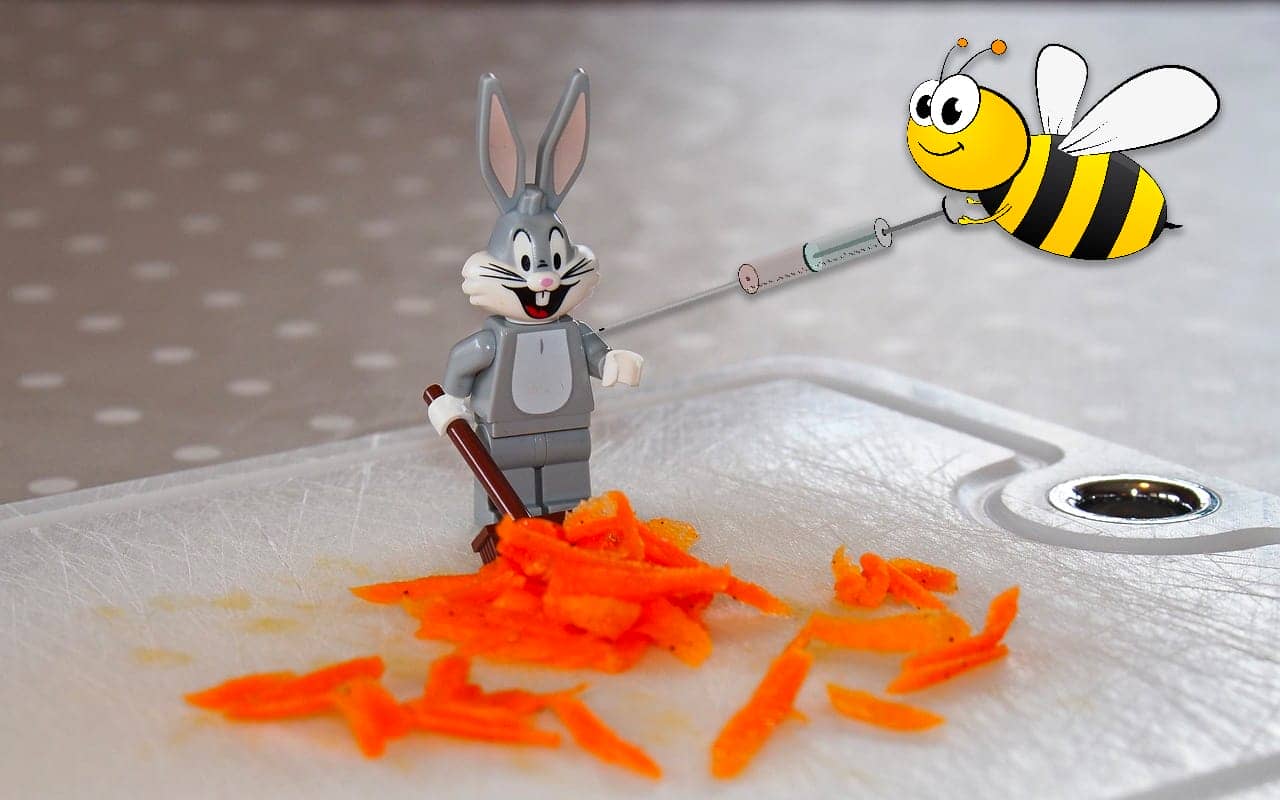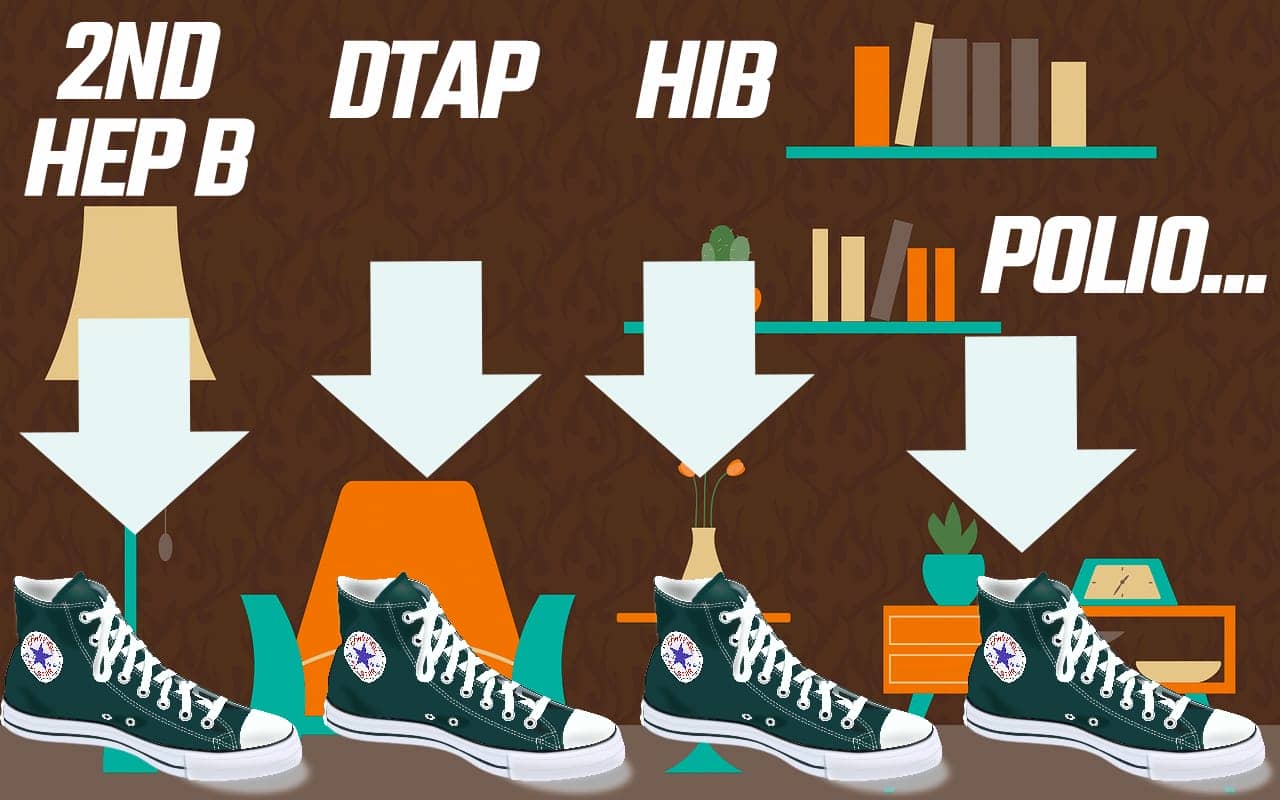 Have you ever thrown your hands up in the air and thought (or yelled), there must be better vaccine schedule mnemonics!?!
Have you ever thrown your hands up in the air and thought (or yelled), there must be better vaccine schedule mnemonics!?!
Good news:
There is indeed an easy and fun way to memorize the immunization schedule.
The trick is to add a layer of personalization to the standard mnemonic examples you find all over the web.
If you’re interested, the scientific reason why personalized mnemonics are better is called active recall.
But you don’t have to know anything about why the techniques work better when they’re personalized.
You just need to know how.
So if you’re ready for high powered vaccine schedule mnemonics that will actually work, let’s dive in!
What Is the Pediatric Vaccine Schedule?
Parts of the immunization schedule for new babies is simple.
When a baby is born, they need Hepatitis B right away.
After that, the schedule can vary from country to country. So it’s important that your nursing knowledge reflects the guidelines in your region.
Usually, the vaccine schedule looks like this:
- Birth = Hepatitis B
- 2 months = 2nd dose of Hep B, 1st doses of diphtheria, tetanus, pertussis, haemophilus influenzae type B, polio, pneumococcal conjugate and rotavirus
- 4 months = 2nd dose of diphtheria, haemophilus influenzae type B, polio, pneumococcal conjugate and rotavirus
- 6 months = 3rd doses of Hep B, diphtheria, haemophilus influenzae type B, polio, pneumococcal conjugate and rotavirus
- Yearly = influenza
As a bit of a shortcut, note that infants receive the same vaccines at months 2 and 6. It’s also pretty simple to remember that Hepatitis B is not given at 4 months.
But what about all of these complex names? How do you remember them? And tie them together with the vaccine schedule itself?
That’s what we’re going to discuss next.
How to Remember Vaccine Schedule for Pediatrics: 6 Mnemonics
As we go through this list of mnemonic examples, remember the rule of personalization. I’ll give my own examples, but it’s important that you modify them based on your personal mental imagery.
With that in mind, let’s dive in.
Birth
Usually people suggest that you simply note that birth starts with B, so it’s easy to link that together with the name of the Hep B vaccine.
I suggest you use this as an opportunity to practice memory techniques more robustly, however.
To do that, the pegword method suggests imagining Bugs Bunny as an infant getting his shot of Hep B from a giant bumble bee.
This additional level of imagination makes it so much easier to recall the information later. Elaborative rehearsal studies have demonstrated this many times. If you need a bit of practice, try these elaborative memory exercises.
Note also that you’re using the linking and story method at the same time.
2 Months
This is where remembering multiple data points gets a bit more challenging.
I suggest you explore the number rhyme strategy.
Basically, you rhyme each number, such as one is a bun, two is a shoe, three is a bee, etc.
Next, you associate one of your shoes with each of the required vaccines at the two month mark:
- 2nd dose of Hep B
- 1st doses of diphtheria
- Tetanus
- Pertussis
- Haemophilus influenzae type B
- Polio
- Pneumococcal conjugate
- Rotavirus
Now, because this is a lot of information, I suggest you use a Memory Palace. It will help you separate the different associations out across space, while also memorizing each medical term.
Although this might seem like a lot at first glance, it’s very simple. It’s also a skill well worth investing in if you’re going to work in medicine. You can use it for other learning tasks like learning the magnesium levels, carpal bones and more.
Basically, you want to link 2 with shoe for the 2nd month. And then individually link each vaccine to your mnemonic image.
For example, Katherine Hepburn’s name sounds a lot of Hep B, so you would imagine her with shoes. You can then have her “dipping” something that reminds you of tetanus into the next shoe in your Memory Palace, etc.
4 Months
For this category, you can stick with the number rhyme system. Or you could use a number object memory system.
For example, a sailboat looks a bit like 4. You would them place associations for the individual vaccines either on sailboat or somehow in combination with one.
6 Months
By 6 months, you’re looking at a lot of third doses. All you really need to do is change your image and use a different Memory Palace.
12-16 Months
What if you prefer using acronyms for your mnemonics?
No problem. To remember Hib, Varicella, PCV, MMR and DTAP for this age range, you just need to make a sentence that resonates with you.
I might think of something like Hibiscus vs. PacMan leads to victory for many, many reasons. The sentence makes no sense, but it is possible to visualize. And you can place the images in a Memory Palace.
4-6 Years Old
By now you know the plot. Pick the mnemonic devices that work best for you. Then personalize them.
For this range, I would probably use a sailboat and a fishing hook because these images resemble 4 and 6. Then I would link them with images for IPV, DTaP, MMR, Varicella.
If you want to explore even more strategies, check out the PAO System. I wouldn’t bring it in myself for this learning task, but you might like to do so.
The Easiest Pediatric Immunization Mnemonic
As I hope to have expressed, easy comes from personalization.
If you don’t know video game characters like PacMan, pick something similar sounding that you are familiar with for best results. From that point on, it really just comes down to letting spaced repetition take care of the rest.
If you need more help, get my FREE Memory Improvement Kit:
It will help you master these techniques further.
That way, you can cover everything you need to learn with much greater ease. Everything from the pediatric vital signs to everything related to pharmacology.
And you’ll have a lot more fun.
Just keep in mind that you might feel a bit stretched while learning how to use mnemonics properly.
That’s okay. A skill without challenge cannot help you grow. That’s why deliberate practice is ultimately what separates the successful from those who never make the grade.
So just practice these memory strategies consistently, lean into any challenges and you’ll be a master of this knowledge before you know it!
Related Posts
- How to Remember Cephalosporin Generations: 15 Easy Mnemonics
Here's how to remember cephalosporin generations with ease by using proper medical mnemonics. Learn the…
- How to Remember Pediatric Vital Signs: 3 Easy Methods
Remembering the pediatric vital signs does not have to be an epic challenge. Learn these…
- Nelson Dellis On Remember It! And Visual Memory Techniques
Looking for visual memory techniques? And I mean truly visual. In this episode of the…







